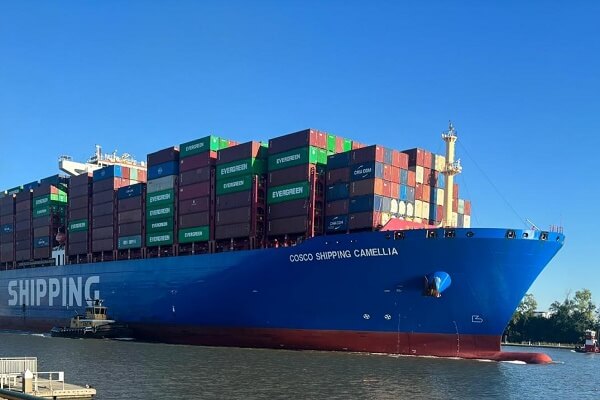
International trade is a complex and dynamic field that requires specialized intermediaries to facilitate smooth transactions between buyers and sellers across borders. Among these intermediaries, export agents, Combination Export Managers (CEMs), and export houses play a crucial role in connecting manufacturers with global markets.
This article explores the history of export agents in international trade, defines their roles, and highlights how they contribute to export management. We’ll also look at real-world examples of companies operating in these categories and examine the legal frameworks that recognize and regulate their activities.
History of Export Agents and International Trade
The concept of export intermediaries dates back centuries, evolving alongside global trade routes. In the early days of commerce, merchants acted as middlemen, buying goods from producers and selling them in foreign markets.
Key Historical Developments:
- Ancient & Medieval Trade: Phoenician and Venetian traders acted as early export agents, facilitating trade across the Mediterranean and Silk Road.
- Colonial Era (16th–19th Century): European trading monopolies like the Dutch East India Company and British East India Company functioned as large-scale export agents, controlling trade between colonies and Europe.
- Industrial Revolution (18th–19th Century): Mass production increased the need for specialized export intermediaries to distribute goods globally.
- 20th Century Globalization: The rise of trade agreements (e.g., GATT, WTO) formalized export agency roles, leading to modern Combination Export Managers (CEMs) and export houses.
Today, these intermediaries help businesses navigate regulations, logistics, and cultural barriers in international trade.
Who Are Export Agents, Combination Export Managers (CEMs), and Export Houses?
A. Export Agents
Export agents act as independent sales representatives for manufacturers, promoting and selling their products in foreign markets. They work on a commission basis and do not take ownership of the goods.
Key Characteristics:
- Operate as independent contractors or firms specializing in specific industries.
- Focus on market penetration and customer acquisition.
- Typically handle multiple non-competing products.
B. Combination Export Managers (CEMs)
CEMs are specialized firms that provide a mix of services, including market research, sales representation, logistics, and documentation. Unlike agents, they may take temporary title to goods and handle multiple clients in complementary industries.
Key Characteristics:
- Act as export departments for multiple manufacturers.
- Provide end-to-end export solutions, including compliance and financing.
- Often work on a retainer or commission basis.
C. Export Houses
Export houses are larger entities that buy products from manufacturers and sell them internationally under their own brand or as a distributor. They assume full responsibility for marketing, shipping, and payment collection.
Key Characteristics:
- Purchase goods outright, taking ownership and risk.
- Handle bulk exports and long-term contracts.
- Often operate as trading companies with global networks.
Role of Export Agents, CEMs, and Export Houses in Export Trade
| Intermediary | Key Roles | Legal & Financial Responsibility |
| Export Agents | – Act as sales representatives in foreign markets – Negotiate deals on behalf of manufacturers – Earn commissions on sales | – No ownership of goods – Governed by agency agreements under contract law |
| Combination Export Managers (CEMs) | – Provide end-to-end export management – Handle logistics, compliance, and market entry strategies – May take temporary ownership of goods | – May assume limited liability for shipments – Operate under trade compliance laws (e.g., INCOTERMS) |
| Export Houses | – Purchase goods outright and sell internationally – Manage branding, distribution, and customer relationships – Assume financial and logistical risks | – Full legal ownership of goods – Must comply with export control laws (e.g., ITAR, EAR) |
These intermediaries reduce the burden on manufacturers, allowing them to focus on production while experts handle international sales.
Legal Recognition of Export Agents in International Trade
Export agents and intermediaries operate under various national and international laws:
A. International Legal Frameworks
- UNIDROIT Principles of International Commercial Contracts
- Governs agency agreements between exporters and agents.
- Defines rights, duties, and termination clauses.
- INCOTERMS (International Commercial Terms)
- Specifies responsibilities of agents, CEMs, and export houses in shipping (e.g., FOB, CIF).
- World Trade Organization (WTO) Rules
- Ensures fair trade practices for intermediaries.
- Addresses anti-dumping and subsidy regulations.
B. National Laws Governing Export Agents
- United States
- Export Trading Company Act (1982) – Encourages the use of export intermediaries.
- Foreign Corrupt Practices Act (FCPA) – Regulates agent commissions to prevent bribery.
- European Union
- EU Agency Directive (86/653/EEC) – Protects commercial agents’ rights.
- Customs Code (UCC) – Defines export intermediaries’ compliance duties.
- India
- Export-Import Policy (EXIM Policy) – Regulates export houses and agents.
- Foreign Exchange Management Act (FEMA) – Controls cross-border payments to agents.
Export agents, CEMs, and export houses play a vital role in simplifying international trade for manufacturers. By leveraging their expertise, businesses can expand into new markets efficiently while minimizing risks. Legal frameworks at both national and international levels recognize and regulate their activities, ensuring smooth and compliant trade operations.
As global trade continues to grow, these intermediaries will remain essential in bridging the gap between producers and international buyers.
What’s your experience with export intermediaries? Share your thoughts in the comments!